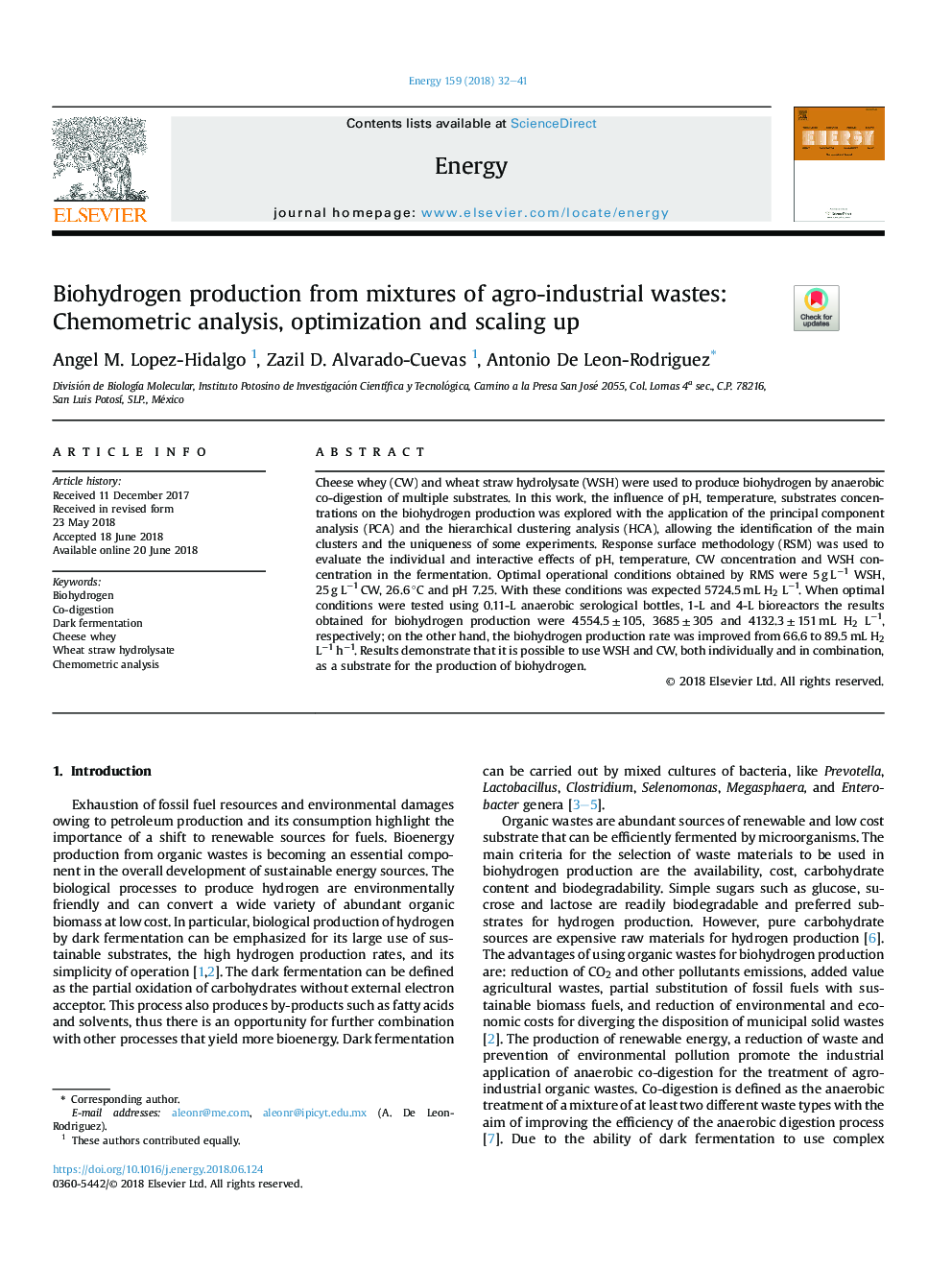| Article ID | Journal | Published Year | Pages | File Type |
|---|---|---|---|---|
| 8071127 | Energy | 2018 | 10 Pages |
Abstract
Cheese whey (CW) and wheat straw hydrolysate (WSH) were used to produce biohydrogen by anaerobic co-digestion of multiple substrates. In this work, the influence of pH, temperature, substrates concentrations on the biohydrogen production was explored with the application of the principal component analysis (PCA) and the hierarchical clustering analysis (HCA), allowing the identification of the main clusters and the uniqueness of some experiments. Response surface methodology (RSM) was used to evaluate the individual and interactive effects of pH, temperature, CW concentration and WSH concentration in the fermentation. Optimal operational conditions obtained by RMS were 5â¯gâ¯Lâ1 WSH, 25â¯gâ¯Lâ1â¯CW, 26.6â¯Â°C and pH 7.25. With these conditions was expected 5724.5â¯mL H2 Lâ1. When optimal conditions were tested using 0.11-L anaerobic serological bottles, 1-L and 4-L bioreactors the results obtained for biohydrogen production were 4554.5â¯Â±â¯105, 3685â¯Â±â¯305 and 4132.3â¯Â±â¯151â¯mL H2 Lâ1, respectively; on the other hand, the biohydrogen production rate was improved from 66.6 to 89.5â¯mL H2 Lâ1 hâ1. Results demonstrate that it is possible to use WSH and CW, both individually and in combination, as a substrate for the production of biohydrogen.
Related Topics
Physical Sciences and Engineering
Energy
Energy (General)
Authors
Angel M. Lopez-Hidalgo, Zazil D. Alvarado-Cuevas, Antonio De Leon-Rodriguez,
